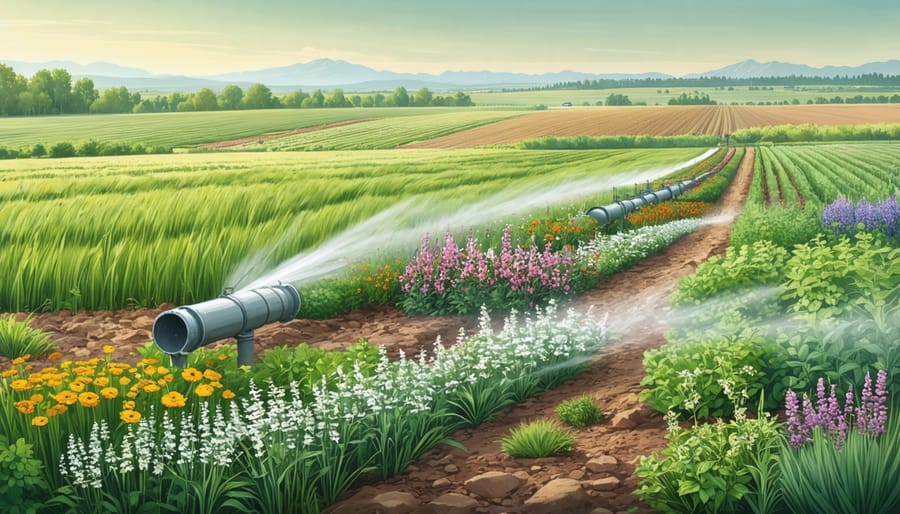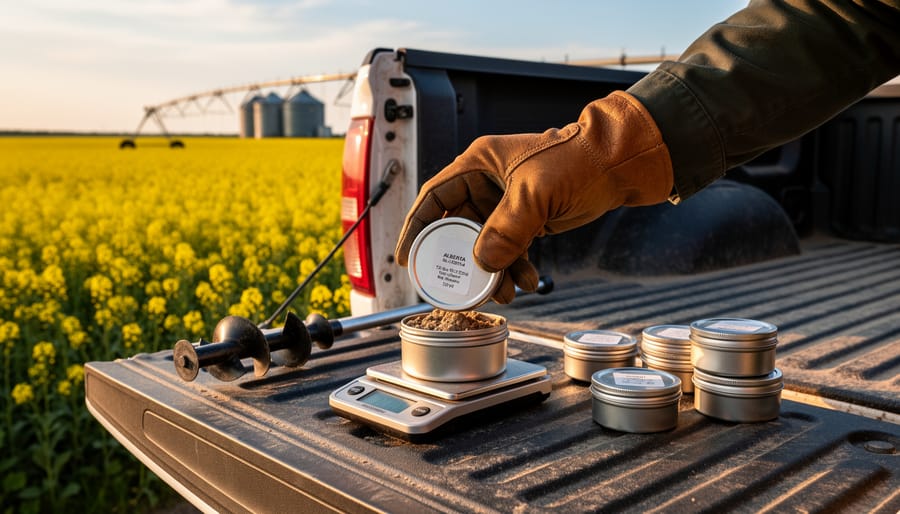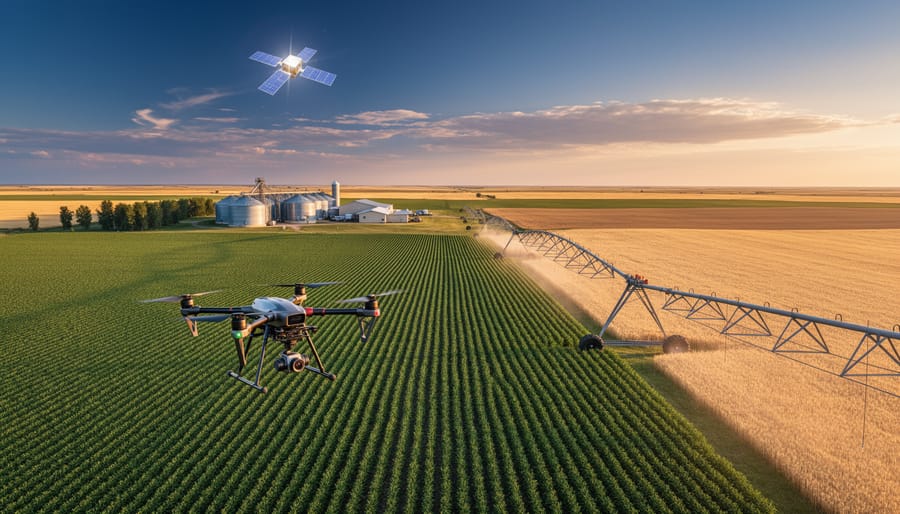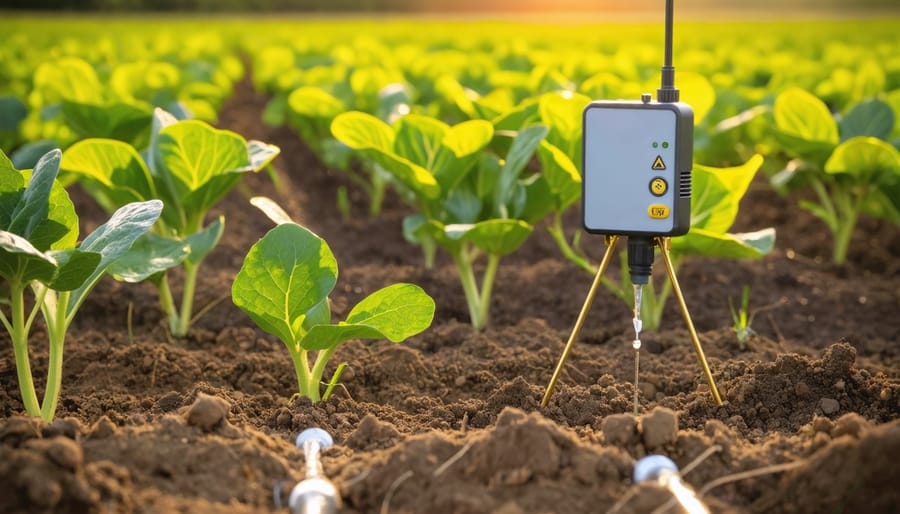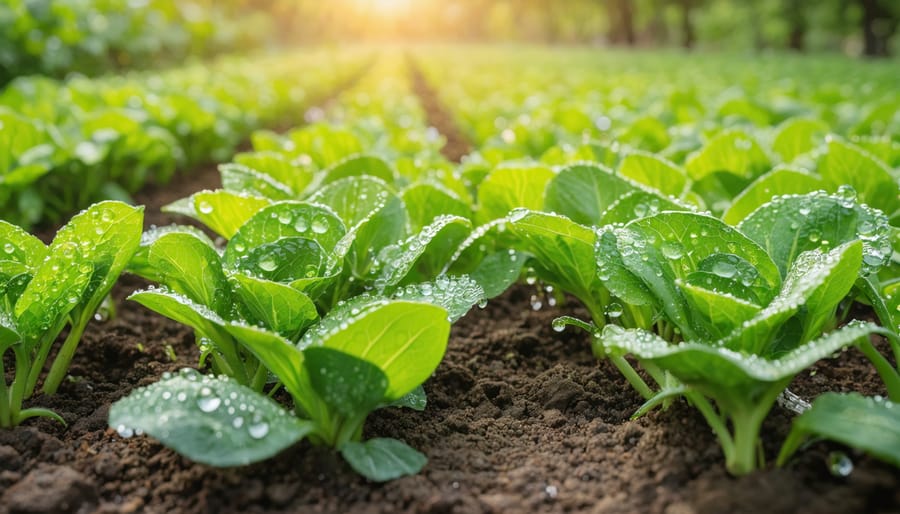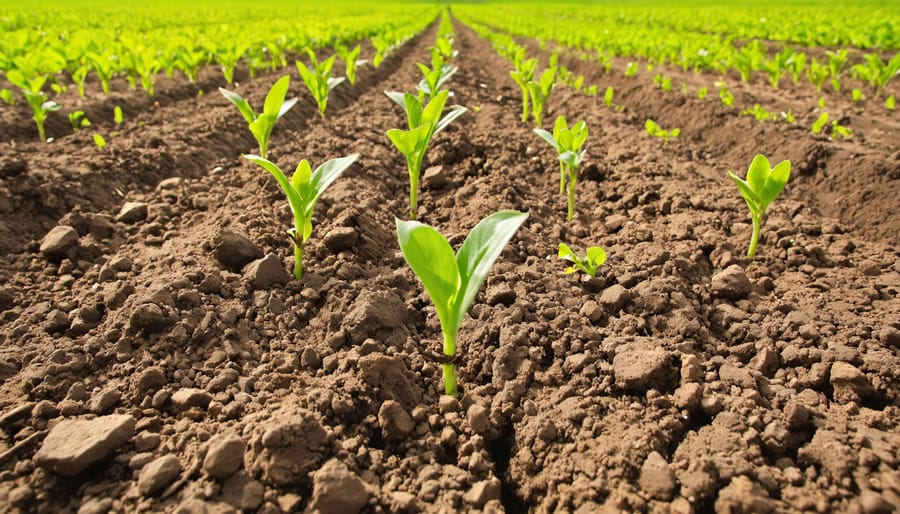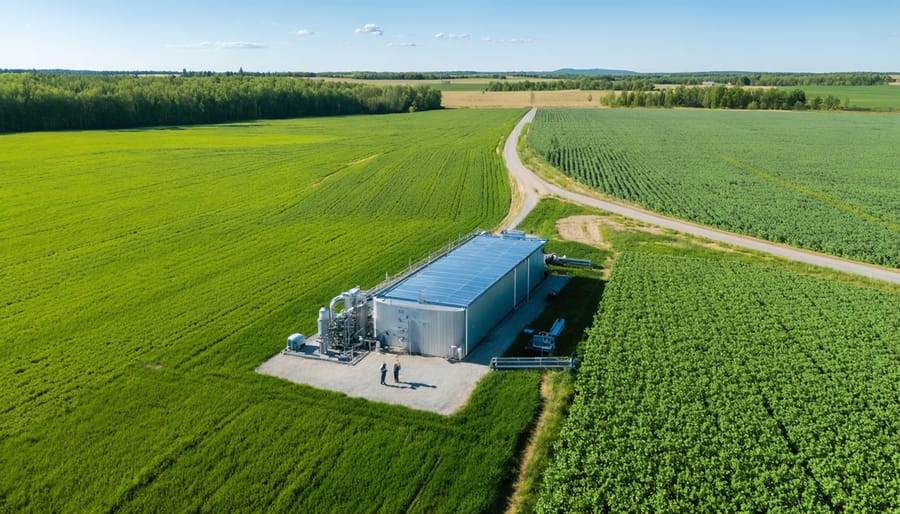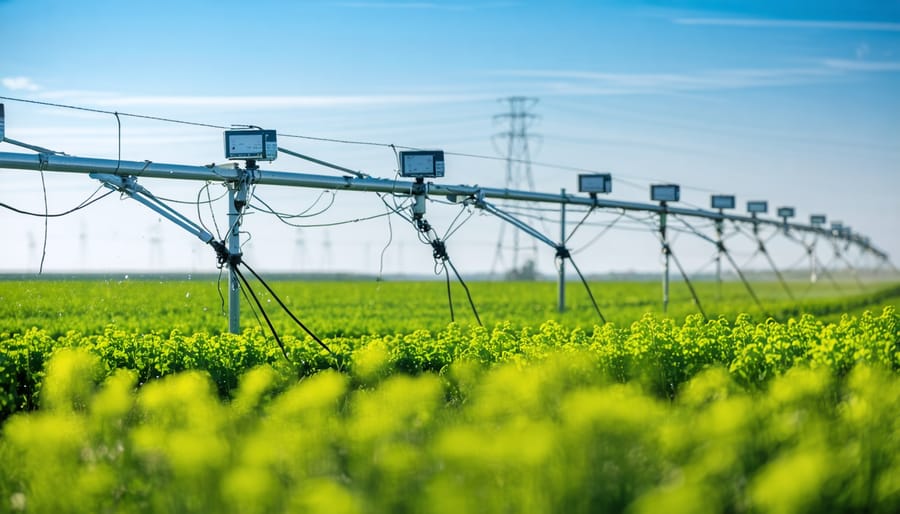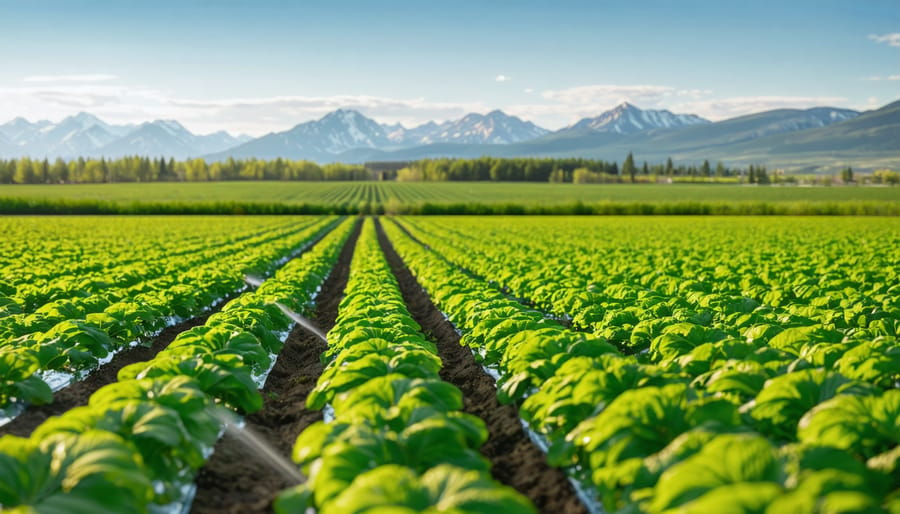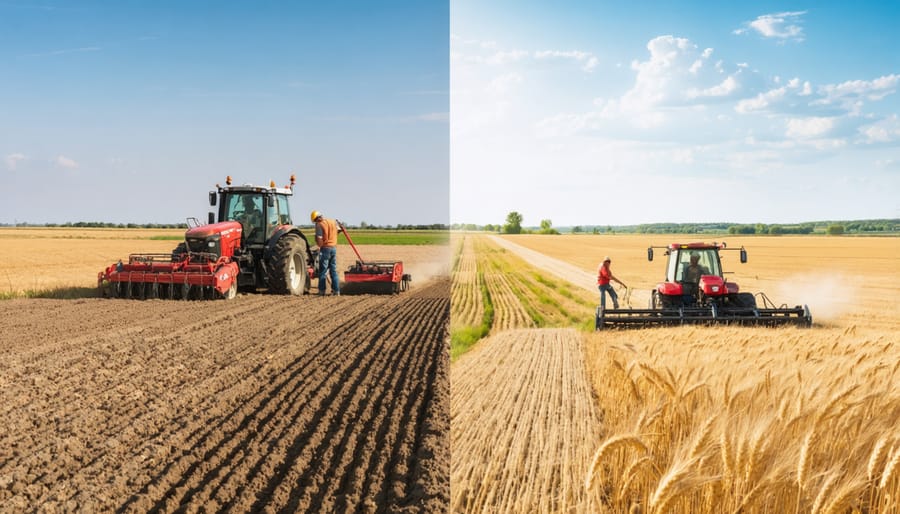Harness the power of native plants like yarrow and prairie sage to reduce irrigation needs by up to 40% across Alberta farmlands. These drought-resistant botanicals create natural water retention systems, transforming traditional agricultural water management while preserving crucial soil moisture. Deep-rooted Canadian prairie species work alongside modern drip irrigation technology, forming living water filters that maximize every millimeter of rainfall and minimize groundwater waste.
From Medicine Hat to Grande Prairie, farmers are pioneering botanical water solutions that combine indigenous plant wisdom with cutting-edge moisture sensing technology. These systems have demonstrated remarkable resilience during recent drought seasons, maintaining crop yields while reducing water consumption by nearly half compared to conventional methods.
By integrating locally-adapted plants with precision irrigation, Alberta producers are building water-smart landscapes that protect both their harvests and our precious water resources. This practical fusion of traditional knowledge and modern innovation offers a sustainable path forward for Canadian agriculture, especially as our climate continues to evolve.
[185 words]
Nature’s Water Engineers: Understanding Botanical Water Systems
Plant-Based Water Retention Techniques
Plants have evolved remarkable mechanisms for water conservation that we can learn from and implement in our farming practices. These natural systems offer valuable insights into water infiltration benefits and retention strategies.
Root systems play a crucial role in water management, with some prairie-adapted plants developing extensive networks that can reach depths of 2-3 metres. These networks not only access deeper water sources but also create channels that improve soil structure and water retention. Prairie grass species, common in Alberta, demonstrate this effectively through their fibrous root systems.
Leaf adaptations are another key feature, with waxy coatings (cuticles) and specialized stomata that regulate water loss. Many native Canadian plants, such as the buffalo berry, have developed silver-grey leaves that reflect sunlight and reduce water evaporation. These natural mechanisms can inspire the selection of drought-resistant crop varieties and inform planting patterns that maximize soil moisture retention.
By understanding and working with these plant-based strategies, farmers can enhance their land’s natural water-holding capacity while reducing irrigation needs.
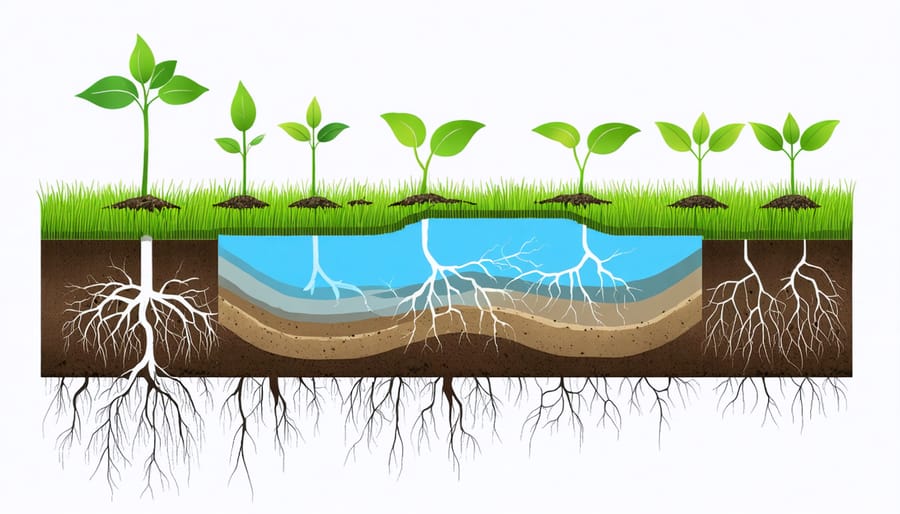
Biomimicry in Agricultural Water Systems
Nature’s water management systems have inspired remarkable innovations in agricultural practices across Alberta. By studying how native prairie plants efficiently collect and distribute water, farmers are implementing similar strategies in their irrigation systems. For instance, the spiral pattern of plant vessels that transport water has influenced the design of more efficient drip irrigation layouts, reducing water waste by up to 30%.
Several Alberta farmers have successfully adapted root system patterns into their field designs. By mimicking the way prairie grasses spread their roots to maximize water uptake, they’ve developed strategic planting arrangements that optimize soil moisture retention. These biomimetic approaches include using companion planting patterns that mirror natural plant communities and implementing water-channeling systems based on leaf structure designs.
The way cacti store water has also inspired the development of water-retention polymers now used in local soil amendments. These materials can hold up to 400 times their weight in water, releasing it gradually during dry periods. Prairie producers are increasingly incorporating these nature-inspired technologies, reporting improved crop resilience during drought conditions while maintaining yields with less irrigation.
Proven Botanical Technologies for Your Farm
Living Mulch Systems
Living mulch systems offer a sustainable approach to water conservation by maintaining continuous living ground cover between primary crops. In Alberta’s climate, farmers have found success using white clover, field peas, and creeping red fescue as effective living mulches.
These companion plants create a protective layer that reduces soil moisture evaporation by up to 30% compared to bare soil. They also improve soil structure and water infiltration through their root systems, helping main crops access moisture more efficiently during dry periods.
Local farmer Sarah Thompson from Lacombe County reports saving approximately 4,000 litres of water per hectare after implementing living mulch in her wheat fields. “The soil stays cooler and retains moisture better, even during our hot prairie summers,” she notes.
To establish an effective living mulch system, select species that won’t compete aggressively with your main crop. Plant them between rows or broadcast seed them shortly after your primary crop emergence. Proper timing is crucial – aim for establishment during cooler, moister periods to ensure successful growth.
Benefits extend beyond water conservation. Living mulches suppress weeds, prevent soil erosion, and contribute to soil organic matter. They also provide habitat for beneficial insects and can be incorporated as green manure at season’s end.

Root Zone Optimization
Optimizing the root zone is crucial for maximizing water efficiency in Alberta’s diverse soil conditions. Through careful management of root systems, farmers can significantly improve their crops’ water uptake while reducing overall irrigation needs.
One effective technique is deep tillage modification, which creates channels for roots to grow deeper into the soil profile. Calgary-based farmer Mike Thompson reports a 30% reduction in irrigation needs after implementing this method across his canola fields. “The deeper root systems access moisture reserves that would otherwise go unused,” Thompson explains.
Incorporating organic matter through cover cropping and crop rotation helps create soil structures that enhance water retention. These practices increase the soil’s water-holding capacity while promoting beneficial microbial activity around the root zone.
Root pruning, when timed correctly, encourages lateral root development and helps plants establish more extensive water-gathering networks. Studies at the Lethbridge Research Centre show that strategic root pruning can improve water use efficiency by up to 25% in wheat crops.
Mulching around the root zone with locally available materials like straw or wood chips reduces evaporation and maintains consistent soil moisture levels. This practice is particularly effective during Alberta’s hot summer months when water loss through evaporation is highest.
For optimal results, combine these techniques with regular soil moisture monitoring and adjust management practices based on specific crop needs and local soil conditions.
Plant-Based Water Filtration
Plant-based water filtration has emerged as a game-changer for Alberta farmers seeking sustainable solutions for water management. These natural water filtration systems harness the power of specific plant species to purify and process agricultural runoff, creating a self-sustaining cycle that benefits both crops and local watersheds.
Common reed (Phragmites australis) and cattails (Typha latifolia), both native to Alberta, have proven particularly effective in removing excess nutrients and agricultural chemicals from water. These plants can filter up to 70% of suspended solids and reduce nitrogen levels by up to 50% in properly designed systems.
Local farmer Sarah Thompson from Lacombe County implemented a plant-based filtration system using bullrushes and water iris in 2020. Her system now processes 5,000 litres of irrigation runoff daily, resulting in cleaner water returning to her fields and a 30% reduction in supplemental irrigation needs.
To establish an effective plant-based filtration system, consider creating a series of shallow retention ponds planted with local wetland species. The roots of these plants form complex networks that trap sediments while beneficial bacteria colonize the root systems, breaking down organic pollutants. This approach typically requires minimal maintenance once established and can function effectively for 15-20 years with proper management.
Real Results: Alberta Success Stories
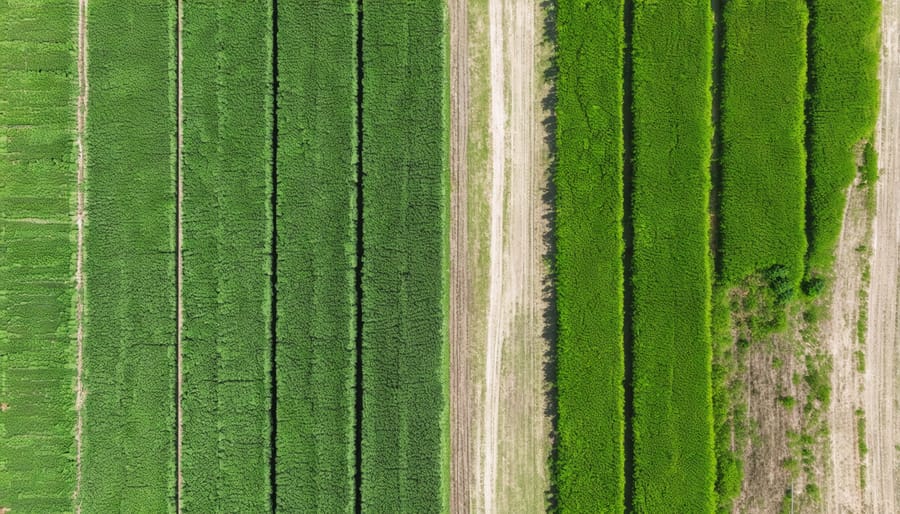
Southern Alberta Vegetable Farm Case Study
In 2021, the Robertson family farm in Taber, Alberta, implemented a comprehensive botanical water management system across their 80-hectare vegetable operation. The farm, which primarily grows carrots and onions, faced increasing pressure from irregular rainfall patterns and rising irrigation costs.
Working with local agricultural specialists, the Robertsons integrated drought-resistant companion plants throughout their fields and established living mulch corridors between crop rows. They selected native prairie grasses and nitrogen-fixing legumes that naturally enhance soil moisture retention while requiring minimal additional water themselves.
The results were remarkable. Within the first growing season, the farm reduced its water consumption by 32% compared to previous years, while maintaining comparable crop yields. Soil moisture sensors showed a 45% improvement in water retention in areas where companion plants were established, particularly during the critical July-August growing period.
“The system practically paid for itself in the first year,” notes Sarah Robertson. “We saved about $15,000 in irrigation costs, and our soil health has improved significantly.” The farm also reported a noticeable decrease in soil erosion during strong winds, a common challenge in Southern Alberta.
The success of this implementation has inspired five neighbouring farms to adopt similar systems, creating a growing community of farmers sharing knowledge and experiences with botanical water technologies in the region.
Central Alberta Mixed Operation Success Story
The Larsen family farm, located 30 kilometers east of Red Deer, demonstrates how botanical water technologies can succeed across diverse agricultural operations. Operating 800 hectares of mixed farming – including canola, wheat, and a 200-head cattle operation – the Larsens implemented botanical water solutions in 2019 to address increasing water management challenges.
By introducing drought-resistant cover crops and incorporating plant-based water retention systems, they reduced their irrigation needs by 35% while maintaining productive grazing lands. The family strategically planted willow buffers along field edges, which not only helped with water retention but also provided natural windbreaks for their cattle.
“We were skeptical at first,” admits Sarah Larsen, “but seeing how these botanical solutions worked with both our crops and livestock operation made us believers.” The farm’s innovative approach includes rotating their cattle through managed pastures enhanced with deep-rooted native species that improve soil water retention.
The Larsens documented a 28% reduction in their seasonal water usage and noticed improved soil health across their operation. Their success has inspired neighboring farms to explore similar solutions, creating a local knowledge-sharing network. The project demonstrates how botanical water technologies can be adapted to serve multiple agricultural purposes while building community resilience in Central Alberta’s variable climate.
Implementation Guide for Your Farm
Assessment and Planning
Before implementing botanical water technologies, conducting a thorough assessment of your farm’s specific needs is essential for success. Start by documenting your current water usage patterns and identifying areas where water conservation strategies could make the biggest impact.
Begin with a soil analysis to understand moisture retention capabilities across different field sections. Map out your existing irrigation systems and note their efficiency levels. Consider factors like crop types, seasonal rainfall patterns, and local climate conditions specific to your region in Alberta.
Create a detailed implementation plan that includes:
– A water audit of current usage
– Soil moisture monitoring points
– Priority areas for system installation
– Timeline for gradual implementation
– Budget considerations
– Training requirements for farm staff
Many Alberta farmers find success by starting with a pilot project on a small section of their land. This approach allows you to test and adjust systems before scaling up. Consider connecting with local agricultural extension services or experienced neighbors who have already implemented similar technologies.
Remember to factor in seasonal variations and extreme weather events when planning. Your implementation timeline should align with your crop rotation schedule and account for installation during optimal weather conditions.
Cost-Benefit Analysis and Funding Options
Implementing botanical water technologies requires careful financial planning, but the long-term benefits often outweigh the initial investment. Most Alberta farmers can expect to see a return on investment within 2-3 growing seasons through reduced water consumption and improved crop yields.
Initial setup costs typically range from $5,000 to $15,000 per hectare, depending on the chosen system complexity. However, annual water savings of 30-40% translate to approximately $2,000-3,000 per hectare in reduced irrigation costs. Additional benefits include decreased fertilizer usage and improved soil health, contributing to long-term cost savings.
Several funding options are available to support implementation. The Canadian Agricultural Partnership (CAP) offers grants covering up to 50% of project costs, with maximum funding of $50,000 for water efficiency improvements. The Alberta Environmental Farm Plan provides additional incentives for farmers adopting sustainable practices.
Local agricultural cooperatives often offer member financing options with competitive interest rates. The Farm Credit Canada’s sustainability initiatives include specific lending programs for water conservation projects, with terms up to 10 years.
Consider starting with a pilot project on a smaller land portion to test effectiveness and manage initial costs. Many successful Alberta farmers have used this approach to scale up their botanical water systems gradually, allowing for better budget management and system optimization based on results.
Botanical water technologies represent a significant opportunity for Canadian farmers to lead the way in sustainable agriculture. By implementing these nature-inspired solutions, we can reduce water consumption by 30-45% while maintaining or even improving crop yields. The success stories from Alberta farms demonstrate that these methods are not just environmentally sound but economically viable. As our climate continues to change, adopting these innovative approaches becomes increasingly crucial for the future of farming. Whether you’re managing a large operation or a small family farm, botanical water technologies offer practical, scalable solutions that align with both traditional farming wisdom and modern sustainability goals. The time to embrace these technologies is now – for our farms, our communities, and our shared future in Canadian agriculture.

